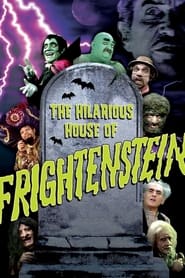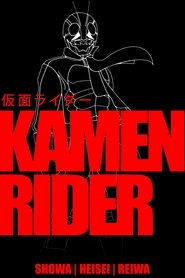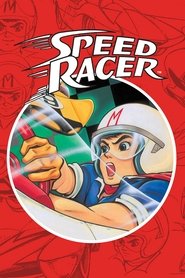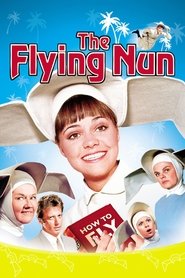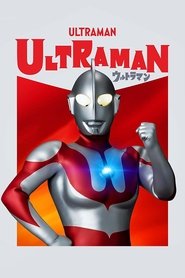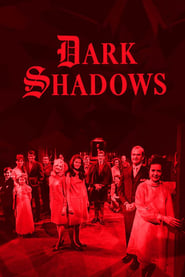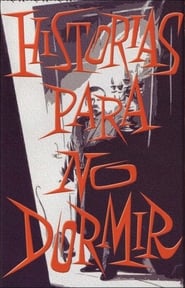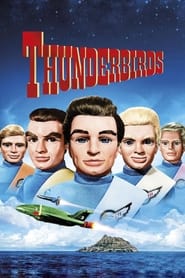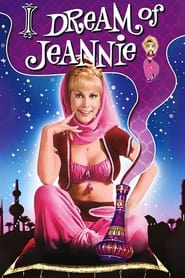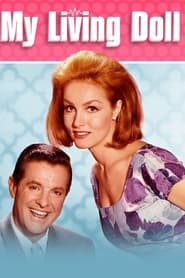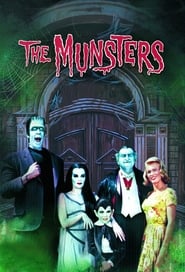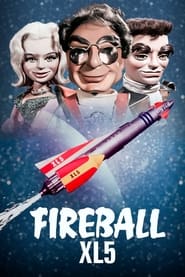New Sci Fi Fantasy TV Series on Tubi TV - Page 24
-
The Hilarious House of Frightenstein
1971
star 7.6The Hilarious House of Frightenstein, was a quirky Canadian sketch comedy TV series from the 1970s that included some genuine educational content among the humour. It featured the talented Billy Van, Billy Van, Billy Van, and many more. Fishka Rais played the role of Igor, Joe Torbay portrayed Gronk, Guy Big brought Count Munchkinstein to life, and the legendary Vincent Price made special guest appearances. “Another lovely day begins, for ghosts and ghouls with greenish skin. So close your eyes and you will find that you’ve arrived in Frightenstein. Perhaps the Count will find a way to make his monster work today. For if he solves this monster-mania, he can return to Transylvania! So welcome where the sun won’t shine, to the castle of Count Frightenstein!” -
Kamen Rider
1971
Kamen Rider
1971
star 6.4Takeshi Hongo is a promising young man with a passion for motorcycle racing. However, his dreams are suddenly ruined when he gets kidnapped by Shocker, the evil secret organization planning to dominate the world. After being remodeled into a cyborg, Takeshi escapes and swears to protect the world from the inhuman monsters. -
Return of Ultraman
1971
Return of Ultraman
1971
star 8.6In a fight between two giant monsters named Takkong and Zazahn, young race car driver Hideki Go is killed while trying to rescue a little boy and a dog from the falling rubble. His valiant sacrifice is noted by everyone, even his friends and the new defense force MAT, but an unseen being also takes notice. Looking over Go is the "New Ultraman", who is so touched by Go's actions that he decides to combine his life force with that of Hideki, thus bringing him back to life. Hideki Go then joins the MAT and fights alongside them and Ultraman against monsters and alien invaders. -
H.R. Pufnstuf
1969
H.R. Pufnstuf
1969
star 7H.R. Pufnstuf is a children's television series produced by Sid and Marty Krofft in the United States. It was the first Krofft live-action, life-size puppet program. The seventeen episodes were originally broadcast from September 6, 1969 to December 27, 1969. The broadcasts were successful enough that NBC kept it on the Saturday morning schedule until August 1972. The show was shot in Paramount Studios and its opening was shot in Big Bear Lake, California. Reruns of the show aired on ABC Saturday morning from September 2, 1972 to September 8, 1973 and on Sunday mornings in some markets from September 16, 1973 to September 8, 1974. It was syndicated by itself from 1974 to 1978 and in a package with six other Kroft series under the banner Kroft Superstars from 1978 to 1985. In 2004 and 2007, H.R. Pufnstuf was ranked #22 and #27 on TV Guide's Top Cult Shows Ever. -
Jekyll
1969
Jekyll
1969
star 4When a series of brutal attacks are committed by a lunatic named Edward Hyde, the investigation leads to molecular biologist Henry Jekyll. But have the doctor's unorthodox experiments unlocked even greater horrors? -
The Prisoner
1967
The Prisoner
1967
star 7.7After resigning, a secret agent is abducted and taken to what looks like an idyllic village, but is really a bizarre Kafkaesque prison. His warders demand information. He gives them nothing, but only tries to escape. -
Captain Scarlet and the Mysterons
1967
star 7.3Captain Scarlet and the Mysterons, often referred to as Captain Scarlet, is a 1960s British science-fiction television series produced by the Century 21 Productions company of Gerry and Sylvia Anderson, John Read and Reg Hill. First broadcast on ATV Midlands from September 1967 to May 1968, it has since been transmitted in more than 40 other countries, including the United States, Australia, New Zealand and Japan. Characters are presented as marionette puppets alongside scale model sets and special effects in a filming technique that the Andersons termed "Supermarionation". This technology incorporated solenoid motors as a means of synchronising the puppet's lip movements with pre-recorded dialogue. Set in 2068, Captain Scarlet presents the hostilities between Earth and a race of Martians known as the Mysterons. After human astronauts attack their city on Mars, the vengeful Mysterons declare war on Earth, initiating a series of reprisals that are countered by Spectrum, a worldwide security organisation. Spectrum b -
Speed Racer
1967
Speed Racer
1967
star 7.5Speed Racer is a teenage driver who races around the world in his super-technological car, the Mach 5, created by his father, a former racer. The car has several special features that help Speed tackle difficult terrain and get rid of dishonest opponents—which happens frequently. He experiences these adventures alongside his girlfriend Trixie, his younger brother Spridle, and his pet monkey, Chim-Chim. Together, they face thrilling challenges and show that courage and fair play make all the difference. -
The Flying Nun
1967
The Flying Nun
1967
star 6.3Young Sister Bertrille uses her ability to become airborne to help others, whether they want it or not. Although her aims are always benevolent, her means are often bemoaned by Mother Superior. The other Sisters must cope with their beloved Sister's aerodynamics and antics as she flies in and out of trouble. -
Ultraman
1966
Ultraman
1966
star 8.4Hayata is a member of the Science Patrol, an organization tasked with investigating bizarre anomalies. He is mortally wounded when accidently encountering an alien being from Land of Light, who grants Hayata new life as the two are merged into one. Now, whenever a threat arises that is too great for the Science Patrol to handle, Hayata activates the beta capsule and becomes the hero known as Ultraman. -
Dark Shadows
1966
Dark Shadows
1966
star 7.2Dark Shadows is an American gothic soap opera that originally aired weekdays on the ABC television network, from June 27, 1966, to April 2, 1971. The show was created by Dan Curtis. The story bible, which was written by Art Wallace, does not mention any supernatural elements. It was unprecedented in daytime television when ghosts were introduced about six months after it began. The series became hugely popular when vampire Barnabas Collins appeared a year into its run. Dark Shadows also featured werewolves, zombies, man-made monsters, witches, warlocks, time travel, and a parallel universe. A small company of actors each played many roles; indeed, as actors came and went, some characters were played by more than one actor. Major writers besides Art Wallace included Malcolm Marmorstein, Sam Hall, Gordon Russell, and Violet Welles. -
Tales to Keep You Awake
1966
star 7Tales of terror by established authors such as Ray Bradbury or Edgar Allan Poe, as well as original scripts. -
Thunderbirds
1965
Thunderbirds
1965
star 7.5Thunderbirds is a 1960s British science-fiction television series which was produced using a mixed method of marionette puppetry and scale-model special effects termed "Supermarionation". The series is set in the 21st century and follows the exploits of International Rescue, a secret organization formed to save people in mortal danger with the help of technologically advanced land, sea, air and space vehicles and equipment, launched from a hidden base on Tracy Island in the South Pacific Ocean. -
I Dream of Jeannie
1965
I Dream of Jeannie
1965
star 7.8While on a mission, American astronaut Captain Tony Nelson is forced to make an emergency landing that will forever change his life. On a deserted South Pacific island, Captain Nelson happens upon a bottle containing a beautiful two-thousand-year-old female genie named Jeannie. Rescuing her from the bottle nets Tony the requisite three wishes, and then some, when Jeannie pledges total devotion to her new "master". -
Stingray
1964
-
My Living Doll
1964
My Living Doll
1964
star 6.5A psychiatrist is given care of Rhoda Miller (real name "AF 709"), a life-like, sophisticated, but naïve android that eventually learns how human society works and begins showing -- or at least emulating -- rudimentary emotions. -
The Munsters
1964
The Munsters
1964
star 7.9A family of friendly monsters that have misadventures all while never quite understanding why people react to them so strangely. -
My Favorite Martian
1963
My Favorite Martian
1963
star 5.9Newspaper reporter Tim O'Hara finds a crashed alien spaceship that contains one live alien. Not wanting to be discovered by the authorities, the Martian assumes the identity of Tim's Uncle Martin and begins to repair his spaceship so that he can return to Mars. -
The Outer Limits
1963
The Outer Limits
1963
star 7.8The Outer Limits is an anthology tv series of self-contained sci-fi-horror stories, sometimes with a plot twist at the end. -
Fireball XL5
1962
Fireball XL5
1962
star 6.1Fireball XL5 is a science fiction-themed children's television show following the missions of spaceship Fireball XL5, commanded by Colonel Steve Zodiac of the World Space Patrol. The show was produced in 1962 by husband and wife team Gerry and Sylvia Anderson through their company APF, in association with ATV for ITC Entertainment. While developing his new show, Anderson thought a brand of motor oil—Castrol XL—had an interesting sound. A phonetic change created the name "Fireball XL", with the "-5" added as the title seemed a bit flat without the numeral. The show featured the Andersons' Supermarionation, a form of puppetry first introduced in Four Feather Falls and Supercar and used again in their subsequent productions such as Stingray and Captain Scarlet. Thirty-nine black and white half-hour episodes of Fireball XL5 were made on 35mm film: all future Anderson series were produced in colour. Several Anderson series have been shown in syndication in the US, but Fireball XL5 is the only Anderson seri
 Netflix
Netflix
 Amazon Prime Video
Amazon Prime Video
 Apple iTunes
Apple iTunes
 Apple TV Plus
Apple TV Plus
 Disney Plus
Disney Plus
 Google Play Movies
Google Play Movies
 Paramount Plus
Paramount Plus
 Hulu
Hulu
 HBO Max
HBO Max
 YouTube
YouTube
 fuboTV
fuboTV
 Peacock
Peacock
 Peacock Premium
Peacock Premium
 Amazon Video
Amazon Video
 The Roku Channel
The Roku Channel
 AMC+
AMC+
 Kocowa
Kocowa
 Hoopla
Hoopla
 The CW
The CW
 Vudu
Vudu
 Starz
Starz
 Showtime
Showtime
 PBS
PBS
 Pantaflix
Pantaflix
 FXNow
FXNow
 Tubi TV
Tubi TV
 Kanopy
Kanopy
 Comedy Central
Comedy Central
 Crunchyroll
Crunchyroll
 Microsoft Store
Microsoft Store
 Redbox
Redbox
 Sun Nxt
Sun Nxt
 ABC
ABC
 DIRECTV
DIRECTV
 Crackle
Crackle
 Fandor
Fandor
 Plex
Plex
